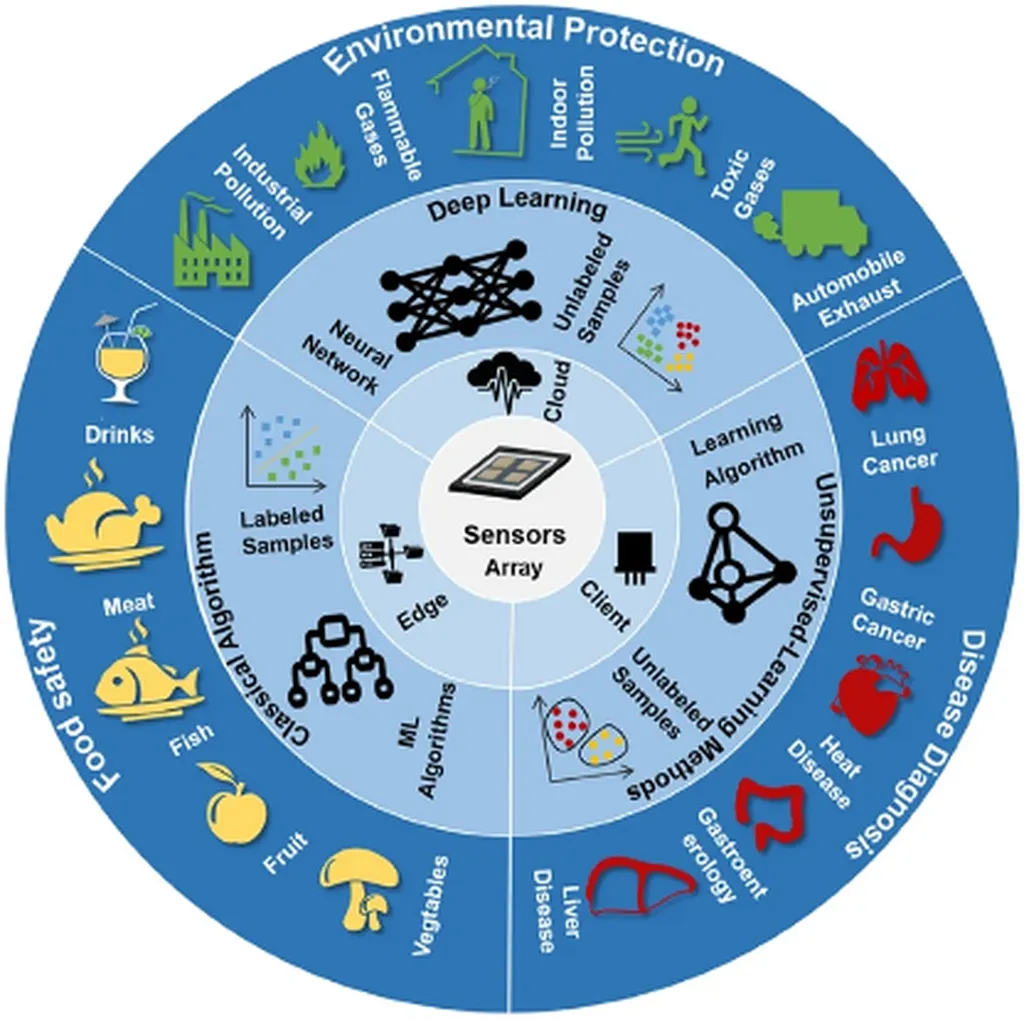In the pursuit of accurate and reliable gas sensing technologies, a team of researchers led by Nirmal Kumar from the Department of Physics and NTIS – European Centre of Excellence at the University of West Bohemia in Pilsen, Czech Republic, has made a significant breakthrough. Their work, recently published in the journal *Applied Surface Science Advances* (translated as *Advances in Surface Science and Technology*), focuses on developing a humidity-resilient acetone gas sensor using WO3/CuWO4 nanocomposite thin films. This innovation could have profound implications for various industries, particularly in energy and healthcare.
The research team demonstrated a high-performing and selective acetone gas sensor based on WO3/CuWO4 nanocomposites. By sequentially sputter-depositing WO3 thin films and CuO nanoparticles, they engineered a sensor that minimizes humidity interference. “The key was optimizing the deposition order and layer thicknesses to harness synergistic p-n/n-n heterojunctions and the formation of a catalytic CuWO₄ ternary phase,” explains Kumar. This careful engineering resulted in a sensor configuration that exhibits a high response to acetone, even in humid conditions.
The best-performing configuration, featuring 20 nm of tungsten oxide film on top of nanoparticles, showed remarkable results. It achieved a high response (S = 23) to 10 ppm acetone at 300 °C, with fast response times of 38 seconds in dry conditions and 58 seconds in humid environments. Additionally, the sensor demonstrated a low detection limit of 0.6 ppm. Perhaps most impressively, it retained over 95% of its response in 90% relative humidity, compared to a loss of over 50% for pristine WO3 sensors.
The reduced humidity interference is attributed to the formation of heterojunctions at the WO3/CuWO4 interface, Lewis acid sites that allow for acetone-selective adsorption, and bulk-dominated conduction. “This noble-metal-free acetone sensor overcomes a known shortcoming of metal oxide-based sensors, enabling accurate acetone detection in humid environments,” says Kumar. This advancement is crucial for applications such as breath-based disease diagnosis, like diabetes detection, and industrial safety monitoring.
The commercial impacts of this research are substantial. In the energy sector, accurate gas sensing is vital for monitoring and maintaining safety in industrial settings. The ability to detect acetone reliably, even in humid conditions, can enhance safety protocols and prevent potential hazards. Additionally, the healthcare industry stands to benefit significantly from this technology. Breath-based disease diagnosis is a non-invasive and efficient method for early detection of various conditions, and the accuracy of these sensors is paramount.
As the world continues to advance in technology and healthcare, the need for reliable and accurate gas sensing solutions becomes increasingly important. The work of Nirmal Kumar and his team represents a significant step forward in this field. Their research, published in *Applied Surface Science Advances*, not only addresses a critical challenge in gas sensing but also opens up new possibilities for future developments. The implications of this research are far-reaching, and it is likely that we will see further innovations building upon this foundation in the coming years.

